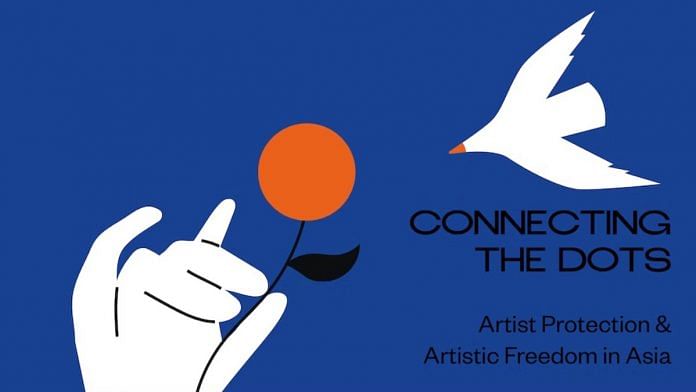New Delhi: Threats against free expression and artistic freedom in Asia continue to rise, with artists finding themselves increasingly vulnerable to violent attacks, censorship, and persecution, according to a new report from PEN America’s Artist at Risk Connection (ARC).
Artists have been specifically impacted by a “recent spate of legislative efforts that seek to encroach on digital security rights, curb ‘fake news’, and suppress criticism against the government or ruling party in the state”, the report says.
The report, Connecting the Dots: Artist Protection & Artistic Freedom in Asia, captures growing anxiety among artists across South, Southeast, East, and Central Asia around stringent security laws, the lack of unencumbered spaces for free expression, and the impact of authoritarian measures to crack down on artistic production and criminalise free expression, PEN America said in a release.
The report — in partnership with the Mekong Cultural Hub (MCH) and the Asian Forum for Human Rights and Development (FORUM-ASIA) — is based on a closed workshop conducted in November 2021, with 25 participants from 19 countries. “The workshop sought to explore the value of art in contemporary times; the myriad forms of censorship artists face; and the relationship between art, artistic freedom, and technology,” the report says.
Key findings include:
- As threats to artistic freedom in Asia intensify, it is critical for artists to develop self-care protocols and build strong relationships with allies to navigate the mental and emotional toll of risk and build access to support mechanisms.
- Because perceptions diverge over what artistic freedom means and how Asian artists and cultural practitioners experience it due to cultural and political differences among countries, it is important to develop a shared definition, articulate common values, account for varied experiences, and encourage artists to become more involved in policy-based roles and legislation.
- Relocation mechanisms too often rely on moving artists to another part of the world rather than elsewhere in Asia. Because regional relocation is less expensive, often poses fewer logistical hurdles, and allows artists to remain in a culturally familiar environment, it should be prioritized when artists seek to relocate.
In addition, the publication offers the following recommendations to help cultural institutions, human rights partners, and civil society shape a basis for actionable steps to protect artists:
- Develop and strengthen artist-enabled networks in a manner that is sensitive to the risk and trauma they experience.
- Offer virtual mentoring sessions that address topics like financial security, digital safety, and emotional resilience.
- Create a digital toolkit for artists in remote locations, empowering them to expand their communities and use digital resources to further their reach.
- Deploy digital resources in a more concerted effort to track, map, and monitor cases of censorship.
- Rethink and reframe the definition of “artist-activist,” especially at human rights organizations, to smash stereotypes of how artists are viewed and perceived.
Director of ARC at PEN Julie Trebault said: “In the last two years, we have witnessed a steady rise in threats and persecution of artists across Asia, a trend where governments are deliberately targeting and silencing cultural rights defenders.” Trebault felt the situation in Asia was very dire. “Now more than ever, it is both essential and urgent to facilitate dialogue between the human rights defenders, cultural, and legal stakeholders in the region,” she added.
Also read: Why India has slipped to ‘partly free’ category on freedom index & how countries are scored



